US private aviation military companies
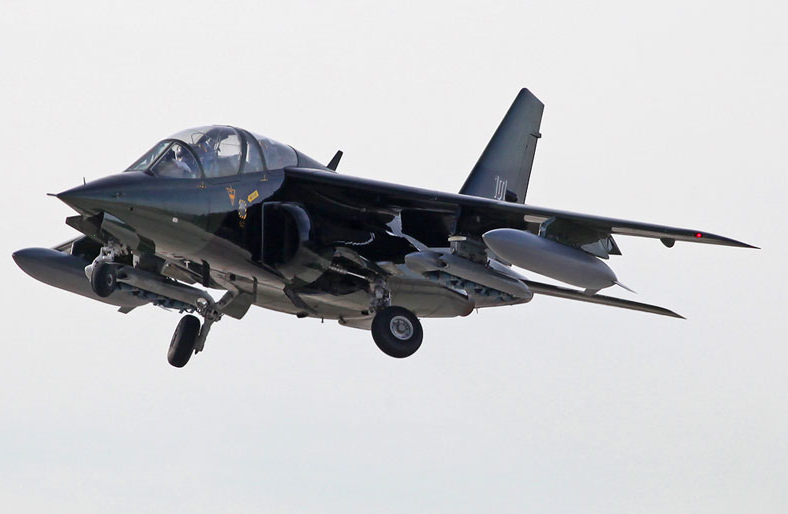
Despite the recent deterioration in relations with the United States, Americans still have a lot to learn. For example, patriotism and how to preserve the material evidence of his and others stories.
This publication will focus on aviation, and this time we will not dwell on rare armored vehicles in private hands and museum displays and numerous monument ships, of which in America, perhaps more than in all other countries combined.
On the pages of the Military Review, articles were repeatedly published on the history of the appearance, testing and operation of Soviet military aircraft in the United States (Soviet fighters in the US Air Force).
In the United States, they are very careful and anxious about old aircraft of the Second World War and the Cold War. And not only own production, but also their opponents.
In addition to fairly fresh samples, in the hands of private owners there are replicas of 30-40's newly built or carefully restored aircraft. Soviet aviation rarities such as I-15, I-153, I-16, Po-2, Yak-3 and Yak-9U are regularly displayed at aviation holidays and exhibitions.
According to the registry of the Federal Aviation Administration, in private hands in the United States are about 600 units of aircraft manufactured in the USSR and Eastern Europe. This list includes only equipment with valid airworthiness certificates, and it does not include hundreds of museum exhibits, combat aircraft and helicopters belonging to the Air Force and Navy, as well as non-flying copies rusting at various airfields. The leader is the piston Yak-52, of which there are 176 aircraft.
The list does not include passenger and transport vehicles owned by private companies engaged in passenger and freight transport. For example, the An-12 and An-26 SRX / Avializing companies built in the USSR, based in Opa-Loka, near Miami, and performing cargo transportation in the Caribbean and Latin America.
After the end of the Cold War, a large number of combat aircraft from the Air Force of Eastern Europe and the former Soviet republics, in addition to the test and training centers of the US Department of Defense, fell into the hands of private owners. US law allows, subject to certain procedures, to register them as civil aircraft.
Currently in the United States about a hundred jet-winged cars have a certificate of airworthiness. These are mainly former Polish MiG-15 UTI and MiG-17, Czechoslovak TCB L-29 and L-39, received from Poland, Hungary and Bulgaria MiG-21 of various modifications, as well as MiG-29. Currently flying machines are mainly combat training "Sparky", mostly exported from Ukraine and Kyrgyzstan.
Used all these aircraft in different ways. Most of them, in the hands of enthusiastic enthusiasts and wealthy collectors, take to the air no more than once or twice a month. They fly during various aviation holidays, promotions, demonstrations or “for the soul”. It should be understood that the operation and maintenance of combat jet machines in flight is a very expensive business, and besides, the main part of these aircraft has a very old age and a small residual resource.

Some combat training vehicles, such as the L-29, L-39, MiG-15 UTI, MiG-21UM and MiG-29UB, are used as "flying attractions". The cost of a half-hour flight to the MiG-21UM starts from 5000 $. For comparison: in Russia, the Country of Tourism company, which organizes flights from the Sokol plant aerodrome, asks for 25 flight minutes for MiG-29UB 550.000 rubles.
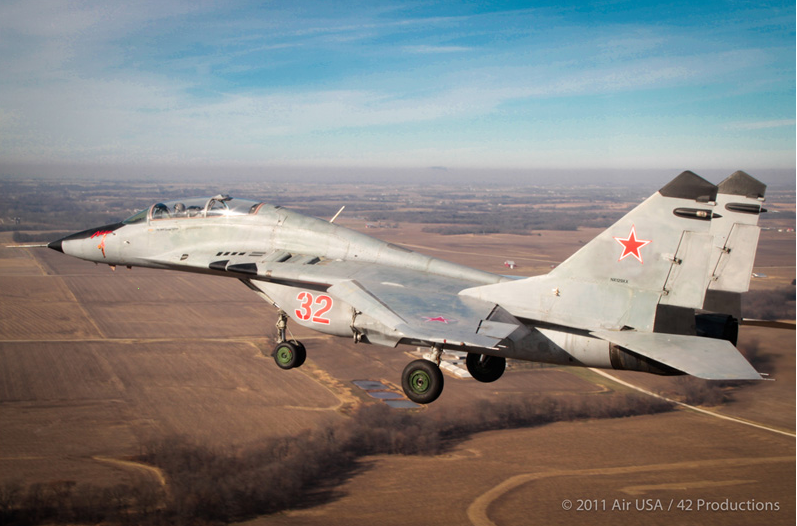
Flights for everyone in the US on the MiG-29 doubles are provided by the airline Air USA, the founder of which is Don Kirlin. Currently, 30 combat aircraft are located at its private airbase. These are Soviet MiG-21, Czech L-39 and L-59, Romanian IAR 823, German Alpha Jet and British Hawk.
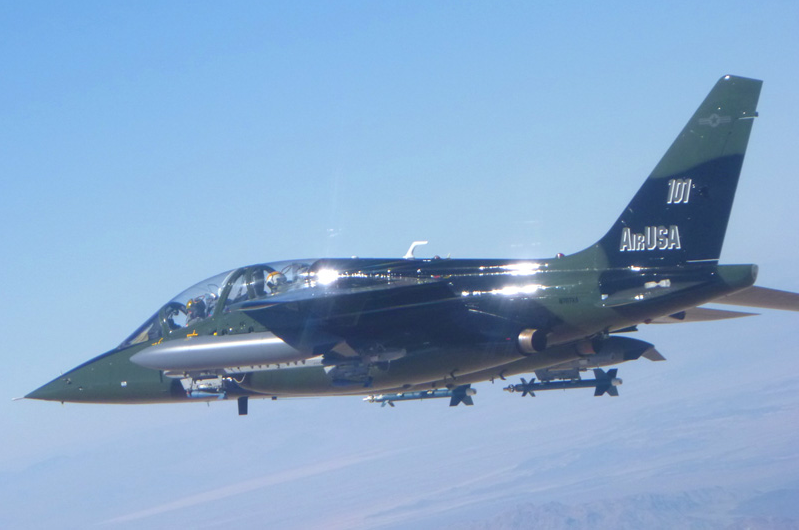
According to the businessman himself, two MiG-29, taken from Kyrgyzstan and subsequently overhauled, are a real decoration of the collection. Don Kir Kirlin’s first combat training MiG-29 took to the skies in the 2010 year and was given the name Natasha. The main aerodrome of Air USA’s home base is Quincy, Illinois.
However, the main source of income for the airline Don Kirlin is by no means conducting entertainment flights. Air USA is a regular contractor of the US and Canadian defense ministries in the organization of combat training.
Air USA airplanes perform more than 90% flights precisely in the interests of the military. Flight tasks can be very different, but mostly it is an imitation of enemy aircraft in close combat and low-level interception, training of air defense calculations, radar testing and testing of EW tasks. In the provision of services to the military, Air USA works closely with companies: Northrop Grumman, Boeing and BAE.
From the beginning of 2003 to the end of 2014. in the interests of military customers, 5722 flights were performed for a total of 12573 hours. If you believe the information posted on the company's website, the “successful missions” were 98,7%. We must assume that the "successful mission" means the execution of the flight task.
Much more rare in America by plane compared with the MiG-29 is the Su-27. The first information about the Su-27 in the United States appeared about 15 years ago. Allegedly, one aircraft for a not very long period for testing and testing provided Ukraine. Allegedly, Su-27 delivered the Ukrainian An-124 Ruslan to the US and back. In the past, despite publications in the media, the US and Ukrainian authorities refused to comment on this issue.
A well-known fact is the purchase in Ukraine of two Su-27 (single and twin) by Prude Aurcraft. Both fighters were certified by the US Federal Aviation Administration in December 2009.
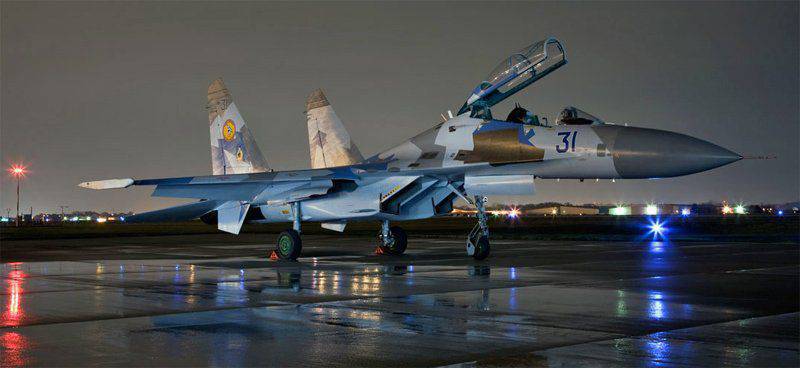
In this story with the purchase of Pride Aircraft in Ukraine, Su-27 fighters have a lot of dubious moments. Initially, the company, founded in 1989, was engaged in restoring used piston aircraft, such as the T-28 and P-51. After repair, they were put up for sale for private collectors or for participation in aviation exhibitions or races.
After the collapse of the "Eastern Block", many inexpensive used jet machines appeared on the market, and Pride Aircraft took over them. At first they were: TS-11 Spark, MiG-15, MiG-17, BAC 167 Strikemaster.
In addition to “foreign cars,” F-86 and T-33 were repaired and restored. However, the Czechoslovak L-39 "Albatross" became a real "bottom" for Pride Aircraft. The first such restored car, which received an American airworthiness certificate, was sold in 1996 year.
In general, the company's business was successful, and there was a steady demand for its services. But Pride Aircraft never, neither before nor after the purchase of the Su-27, was engaged in modern fighters, especially heavy ones. Most likely in this story a rather small private airline engaged in the restoration and sale of used aircraft was used as a fake customer in a deal with Ukraine, and the US Department of Defense became the actual acquirer of Su-27. This is indirectly confirmed by the fact that currently both Su-27 are not listed in Pride Aircraft fleet.
In early September, 2015, on the “Military Review” in the “News"A note appeared:" The United States plans to hold training battles between the F-35 Lightning II and the "Russian fighters."
It literally said the following, quote: "The US Air Force plans to conduct a series of training battles with the participation of fifth-generation light fighters F-35 Lightning II, based at Edwards Air Base, writes Rossiyskaya Gazeta." The A-4 Skyhawk attack aircraft belonging to the American private company Draken International, which specialize in providing services to imitate the enemy in training battles, have been chosen as an enemy to American aircraft. At the same time, the US military does not hide the fact that the pilots will master the tactics of combat with Russian aircraft. ”
This publication caused a real flurry of hurray-patriotic comments. They say that Americans are afraid to converge even in training with the Russian fighters they have.
Of course, the A-4 "Skyhawk", whose production was completed in 1979, cannot in any way be considered a worthy opponent for F-35. But “joint maneuvering” with a light subsonic jet aircraft, which has some similar characteristics with light generation fighter jets 2-3, will help to develop typical methods of attack and evasion. And in general, the flight skills of the F-35 pilots, who have just begun to master this still very “raw” aircraft that has not gotten rid of “childhood diseases”, will increase.
As for the US-based MiGs and Su, there is no doubt that they will also meet in training swatches with F-35, just not the fact that this information will receive wide publicity in the foreseeable future.
In addition to the Skyhawks, the fleet of the largest privately owned US airline, Draken International, which specializes in providing services to the military, has a total of more than 50 aircraft. Including Aero L-159E and L-39, Aermacchi MB-339CB, MiG-21bis and UM. All aircraft of the company flying in the interests of the Pentagon are in very good technical condition and regularly undergo scheduled and remedial repairs. The main location of the company's fleet is the Lakeland Linderve, Florida airfield.
Draken International has a variety of equipment at its disposal, including simulators, various simulators, radar stations and EW equipment. This allows, if necessary, to bring training air battles as close as possible to reality.
Airborne Tactical Advantage Company (abbreviated as ATAC) is another major American private airline that owns combat aircraft.
The head office of this organization is in Newport News, Va. In the same place, at the Williamsburg aerodrome, the aircraft equipment belonging to the company is based and undergoing maintenance.
The main field of activity of the company founded by the American retired military in 1996 is to provide, within the framework of outsourcing to the US armed forces, services for simulating enemy combat aircraft in the framework of air combat training and training of ground and naval air defense equipment. The company currently employs 22 pilots and more than 50 support personnel. At the same time, the aircraft fleet in mid-2014 consisted of 25 units.
Initially, the aircraft MiG-17, A-4 "Skyhawk" and L-39 were at the disposal of ATAC. But after some time, the pilots and the company's management concluded that these machines are not able to fully resist in training bouts of fighters in service with the Air Force and Navy. In addition, the existing aircraft did not satisfy the duration of the flight and the radius of action when performing tasks for training air defense calculations.
As an alternative, Soviet-made aircraft MiG-21, MiG-23 and MiG-29, which could be obtained from Eastern Europe, were considered. But due to the fact that these aircraft, as a rule, required large investments and original spare parts, they were abandoned. The failure of ATAS to use for training flights in the interests of the US Department of Defense of Soviet-made combat aircraft is largely due to the fact that the intensity of such flights is quite high. The total raid of the company's aircraft, carried out in the interests of the US military, exceeded 34000 hours.
Airborne Tactical Advantage Company fleet is based in various regions where there are US military airfields. Being on the same airfields with American combat aircraft in service, they work out a variety of training flight tasks. On an ongoing basis, the aircraft belonging to ATAS are located at air bases: Point Mugu (California), Fallon (Nevada), Kaneohe Bay (Hawaii), Zweibrücken (Germany) and Atsugi (Japan).
For the most part, the company's fleet includes aircraft manufactured at the end of the 70-s - the middle of the 80-s. Planes bought in different countries for a moderate price, despite a decent age, are in good technical condition and, as a rule, have a large residual resource.
The main role in maintaining the aircraft in proper condition is the hard work of technicians and mechanics servicing these machines. In addition, along with the aircraft, a set of certified spare parts is being purchased at the same time, which allows them to be maintained in flight for a long time.
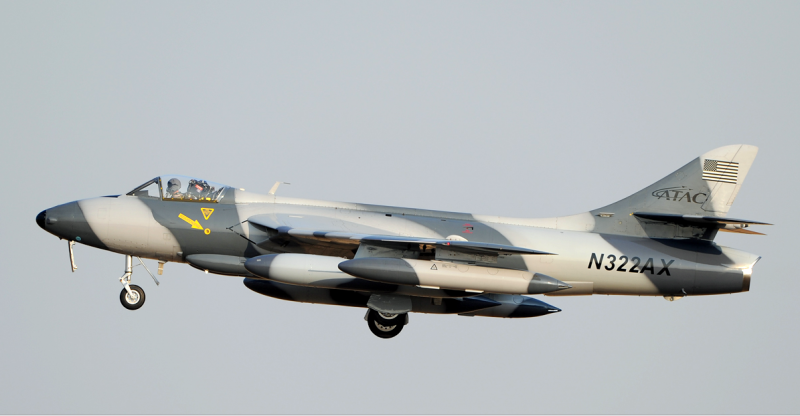
Different planes in the fleet ATAS perform various tasks. “Hunters” in training flights usually depict enemy strike aircraft trying to break through to a guarded object at a low altitude or leading to electronic suppression of air defense systems. In addition, "Hunters" are used as towing aerial targets.
In addition to shock training missions, Skyhawks in the past often imitated Soviet anti-ship missiles of the P-15 family when attacking warships of the US Navy. When flying at maximum speed and the corresponding EPR parameters, these small, maneuverable attack aircraft were most similar in their characteristics to the Soviet RCC. To create an appropriate jamming environment, the Hunters or Albatros, covering Skyhawks, carried containers with EW equipment.
For the training of air battles most often used fighters "Kfir", produced in Israel in the middle of the 80-x and passed the modernization of the 90-s. In the US, these aircraft were designated F-21. According to the experts of the USAF, the modernized Kfirs in their combat capabilities are located between the Soviet MiG-21bis and the Chinese J-10.
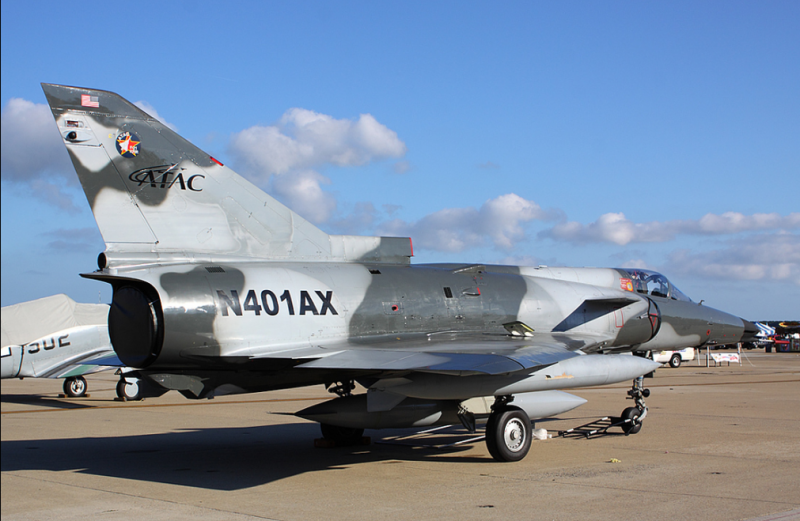
Despite the apparent technical lag behind modern fighters, the Kfirov pilots very often managed to put the American pilots in a difficult position on F / A-18F and F-15C in a close maneuver battle.
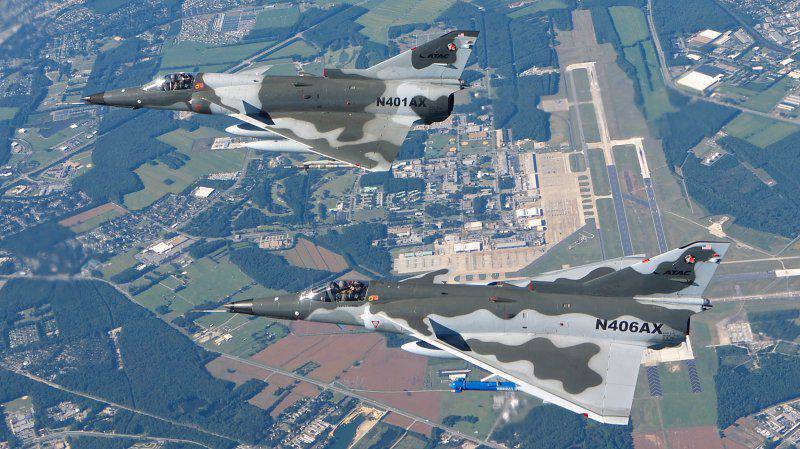
Even the superiority of the newest F-22A in the training of air battles was not always unconditional. Some flight regimes of the Kfir fighter jets, built according to the tailless flight scheme with GIP, turned out to be inaccessible to American aircraft. According to the results of the battles in 2012 with the F-35 fighter from the experimental batch delivered by the US KMP, it was recognized: "The promising fighter supplied by Lockheed-Martin needs further improvement and refinement of the method of air combat."
These results of training battles are largely due to the high qualifications and vast experience of ATAS pilots. They used to fly a lot of fighters, who now confront them in training battles. Naturally, the pilots on the Kfir were well aware of the capabilities of most types of fighter aircraft in service with the United States. At the same time, the main part of the American combatant pilots capabilities and characteristics of "Kfirov" were not known. In addition, unlike combatant pilots of the Air Force and Navy, ATAS pilots are not bound by such a number of rules and restrictions. In total, pilots flying Kfirs flew more than 2000 hours during training missions, indicating a high intensity of flights and a large number of training battles.
To record the results of training air battles on ATAS planes, special control and fixation equipment was installed, which allows for a detailed analysis of the flights. To fully simulate the combat situation of the company’s aircraft carry EW equipment and suspended simulators of close combat missiles with TGS. This allows for a real seizure of the homing head, which increases the realism and accuracy of the outcome of the fight.
ATAS technicians for the technical assignment received from the US Navy, in conjunction with partners from the Israeli aerospace company NAVAIR and the American Martin Baker, developed and assembled several equipment options in outboard containers. This equipment reproduces the radio frequency radiation of onboard navigation and radar systems of Soviet and Russian combat aircraft and anti-ship missiles. A replaceable set of container-type equipment has also been developed, which allows interference in the frequency spectrum used by the Patriot and Standard detection and guidance systems.
Together with the French specialists from MBDA, the AM39 AMXNUMX anti-ship missile simulator was created, which reproduces the operation of the radio altimeter and the active radar impulse homing head. PKR "Exochet" is widespread in the world and, in the opinion of the American sailors, represents a great threat to the ships of the US Navy.
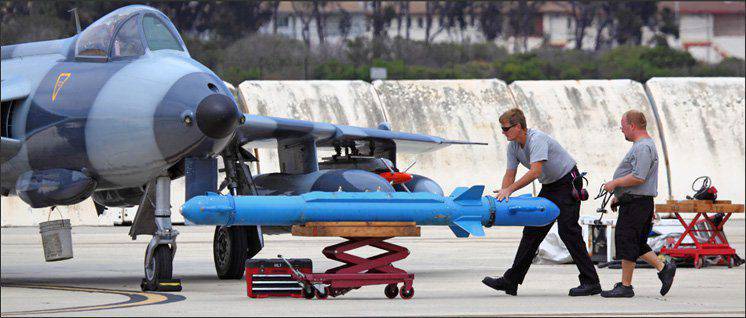
The presence of equipment in removable outboard containers allows you to maximize the situation at the exercises to the real combat. And to create a complex noise background, which gives invaluable experience to radar operators and air defense calculations. Large-scale exercises with the use of aircraft and equipment belonging to this company are regularly held with the ships and aircraft of the US Navy both on the west and east coast.
In addition to playing for the “bad guys” (according to American terminology), ATAS equipment and specialists also participate in various test and test flights conducted as part of the creation and modernization of missile and aircraft systems and weapons.
The commercial success of private military airlines is due to the desire of the leadership of the US Department of Defense to save on the process of combat training without loss of quality.
The cost of flight hours for private companies is much cheaper. The personnel of private companies working under an agreement with the Ministry of Defense do not have to pay pensions, medical insurance and severance payments from the state budget. All costs for maintenance and repair of aircraft participating in training flights are borne by private contractors. In addition, it allows you to save the resource of combat aircraft.
The use of non-armed aircraft in the course of combat training makes it possible to diversify the scenarios of training air battles and better prepare combatant pilots for various situations that may arise in a real combat situation.
Currently, the number of combat aircraft, formally considered civilian, in private airlines engaged in the provision of services to the US military, is more than a hundred. This number is comparable to the number of Air Force aircraft in a country like Spain.
And although now let not the newest and most modern, but still sufficiently combat-ready planes of private aviation companies are used only for training missions, in the future they may very well be used to provide aviation support for carrying out ground operations by private military companies. And also to control the airspace, in armed conflicts around the world, in cases where the US government is not interested for one reason or another to engage regular armed forces.
Based on:
http://www.airport-data.com
http://aroundthepattern.com
http://air-usa.com/aircraft
http://www.prideaircraft.com/index.htm
http://www.drakenintl.com/
Satellite images courtesy of Google Earth.
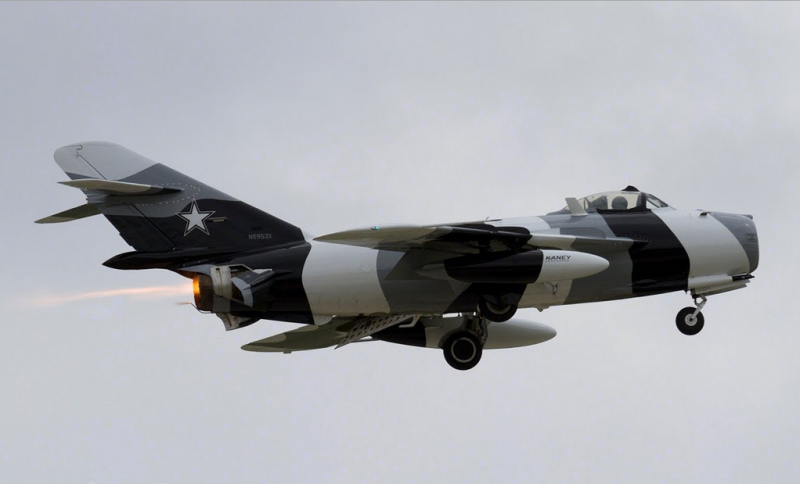
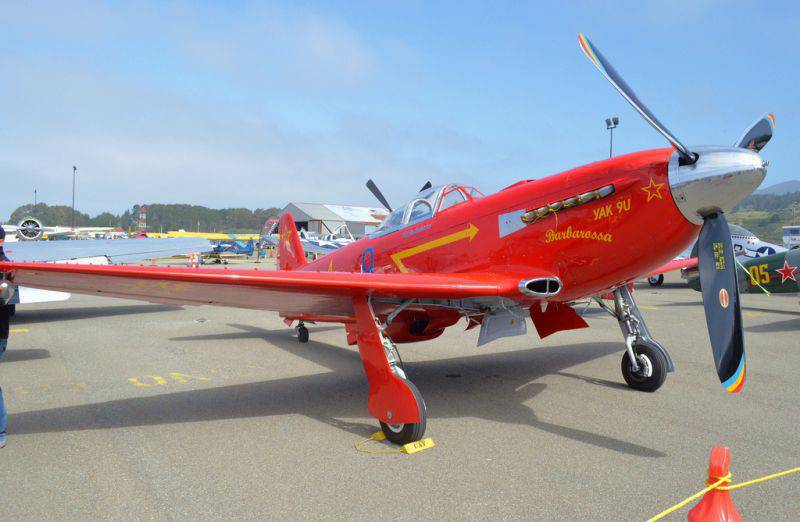
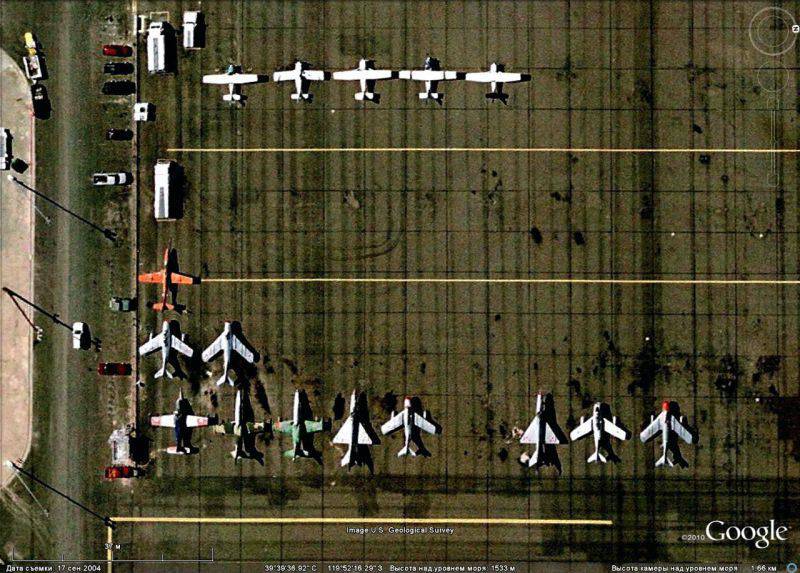
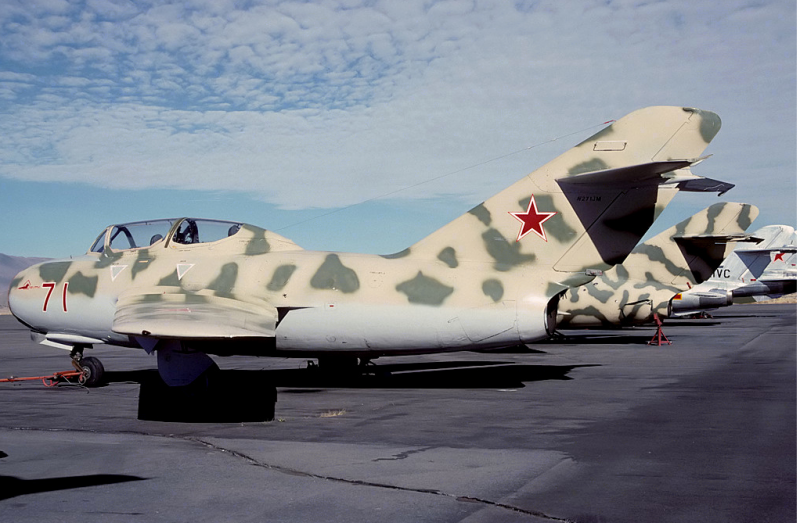
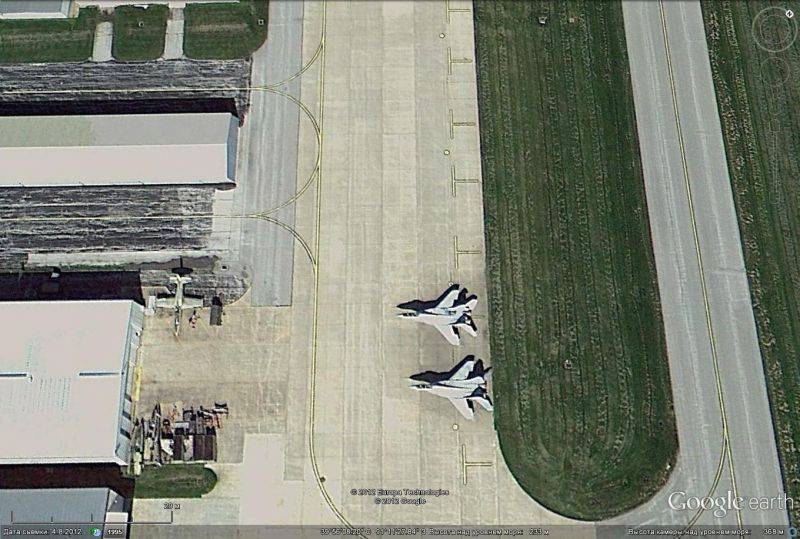
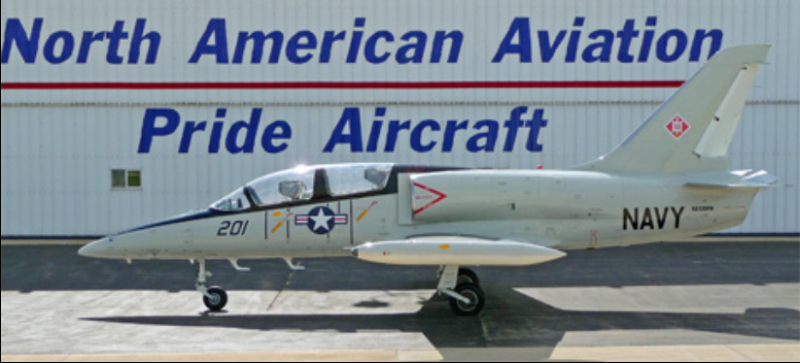
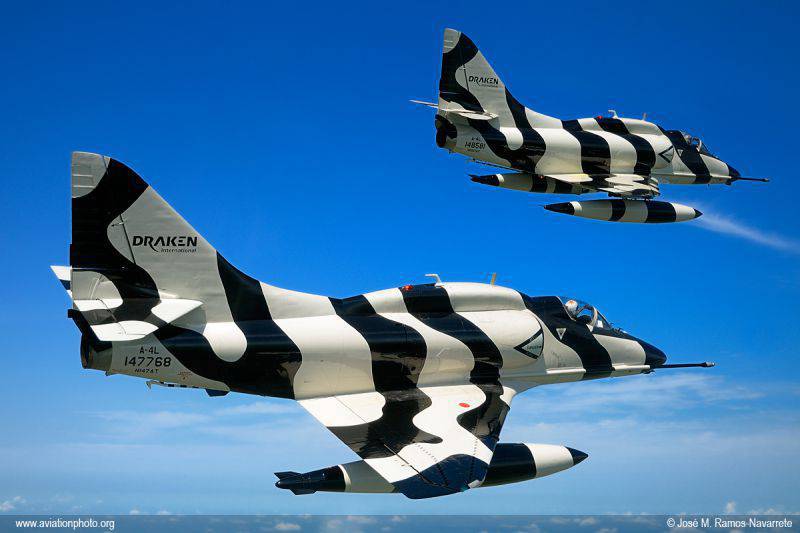
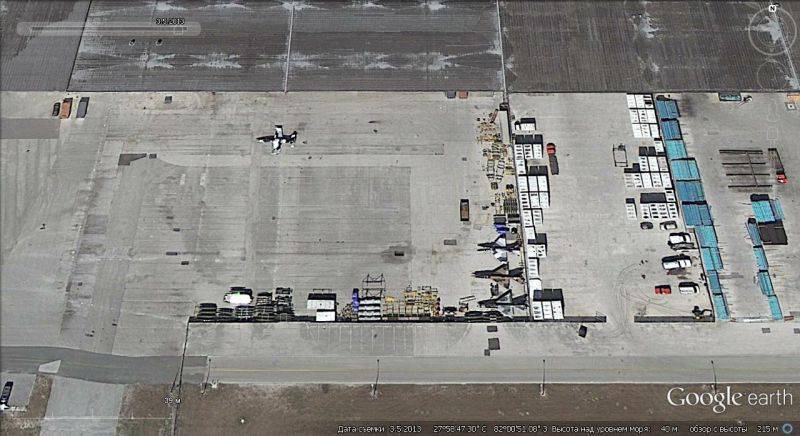
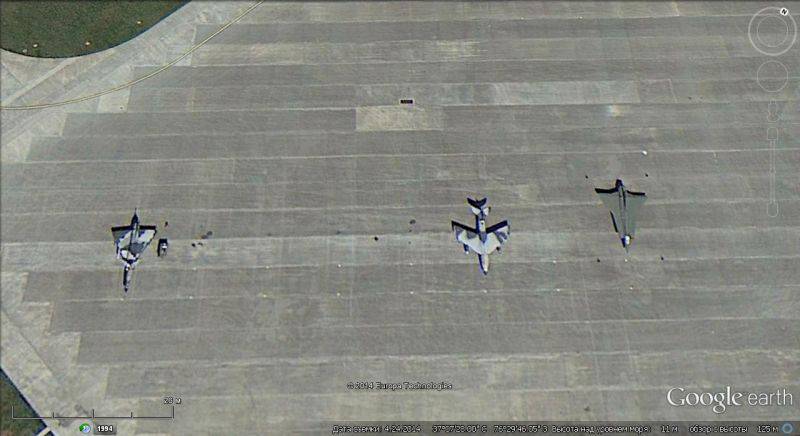
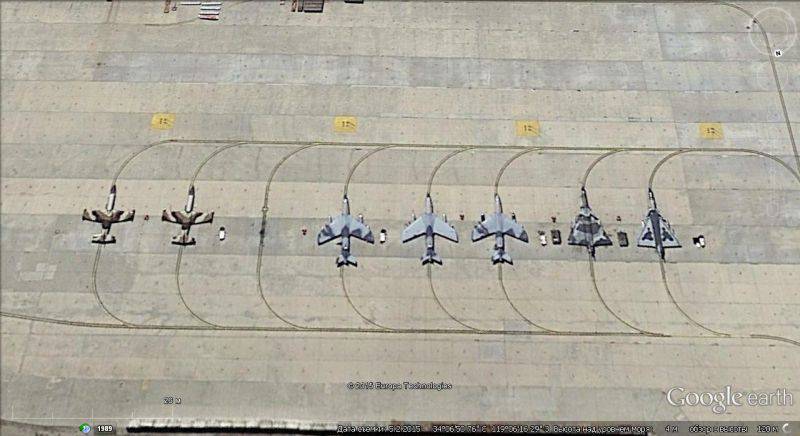
Information